- Home
- Roald Dahl
D is for Dahl Page 2
D is for Dahl Read online
Page 2
Boy ~ This book describes the nice and nasty things that happened to Roald Dahl when he was young. The Norwegian nanny who looked after Roald and his sisters always called him “Boy.” “Boy” is also how Roald signed himself in some of his letters to his mama.
B is for Bugs
Broccoli, Cubby (Albert R.) ~ Part-owner of the rights for the James Bond films, he said his ancestors invented a curly green vegetable that they christened with their surname—can you guess the vegetable?! They did this by crossing cauliflower with rabe. Cubby worked closely with Roald Dahl when he wrote the screenplay for You Only Live Twice. There’s one big similarity between the plot of the film and the storyline of Charlie and the Great Glass Elevator. If you ever watch the movie, keep your eyes peeled. . . but you won’t see James Bond tackling any Vermicious Knids.
Bucket ~ A round, open vessel for carrying water (Ooops! Almost forgot—Bucket is the name of one of the most important families in the history of books featuring boys called Charlie and lots of chocolate.)
Bugs ~ Roald Dahl became quite an expert on creepy-crawlies when he was planning James and the Giant Peach. Did you know, for example, that some bees have tongues that they can unroll until they are twice as long as the bee itself?
B is for Bullies
Bullies ~ Roald Dahl hated bullies. So when his daughter Lucy and her friends were being bullied on the school bus by a girl called Lizzy, he came up with a plan. He wrote a rhyme and told Lucy to teach it to everyone except the bully. They learned the verse and, when Lizzy next picked on a girl on the bus, everyone sang:
Everyone on the bus—except Lizzy—cheered, chanted, clapped, and sang over and over again. Lizzy didn’t pick on them again. In Roald’s books, bullies get their just deserts—see what happens to the aunts in James and the Giant Peach, the horrid giants in The BFG, and Miss Trunchbull in Matilda.
Bursting postbag ~ Roald Dahl received sacks and sacks of mail from fans all over the world—as many as 4,000 letters a week! And he answered every single one of them (with a little help from his secretary and a letter that he adapted each time). Here’s one of the letters he wrote:
B is for Buttercups
My teacher wasn’t half as nice as yours seems to be. His name was Mister Unsworth and he taught us history, And when you didn’t know a date he’d get you by the ear And start to twist while you sat there quite paralyzed with fear. He’d twist and twist and twist your ear and twist it more and more, Until at last the ear came off and landed on the floor. Our class was full of one-eared boys, I’m certain there were eight, Who’d had them twisted off because they didn’t know a date. So let us now praise teachers who today are all so fine And yours in particular is totally divine.
Buttercups ~ Roald Dahl’s Norwegian grandfather was a naturalist and encouraged young Roald’s interest in nature. Roald once ate the bulb of a buttercup and described it as “frighteningly hot.” We’ll just have to take his word for it.
WARNING!
Do not try eating plants at home! It’s very dangerous to eat anything growing wild! Always ask an adult!
The Cabin ~ This was the name of the house Roald Dahl’s mother used to rent for the Easter holidays in Tenby, Pembrokeshire. It was right next to the sea, and Roald and his sisters used to collect periwinkles and cook them, then eat them on slices of bread and butter. Try this yummy snack for yourself!
Cats ~ Roald Dahl adored dogs, birds, and even goats. But he hated cats.
Cave drawing ~ Roald Dahl as an adult didn’t think much of wallpaper. He once announced that he was going to try his hand at cave drawing. He insisted he needed to be alone to be inspired, and single-handedly decorated a whole wall of the house. His family was stunned by the results—until a few weeks later, when his wife, clearing out some drawers, found the stencils he had used to produce his “original” works of art!
C is for Charlie and the Chocolate Factory
WARNING!
Do not try this at home, unless you want to spend your next five years’ pocket money on new wallpaper!
Characters with no name ~ No matter how many times you read The Witches or The Magic Finger, you never find out the names of the boy and girl at the heart of these stories, and yet you feel as if you know them as well as one of your friends. Discover for yourself. . .
Charlie and the Chocolate Factory ~ When he’d finished writing this book, Roald Dahl gave it to his nephew Nicholas to read. The surprising verdict was “rotten and boring,” so Roald took action at once. He rewrote the book, getting rid of lots of characters while changing and improving the story.
C is for Charlie and the Chocolate Factory
The original Charlie was just one of fifteen horrible children—not very important at all—and the story was called Charlie’s Chocolate Boy. Even the visit to the chocolate factory wasn’t that special—there was one every Saturday.
Charlie and the Great Glass Elevator ~ A lot of frowning and umming and aaahing went into the title of the sequel to Charlie and the Chocolate Factory. At first, Roald Dahl thought the word “elevator” was too American, but the British “lift” seemed far too boring. “Air machine” was considered, but “elevator” came out on top in the end. (“Lift” was used in the text of Charlie and the Chocolate Factory.)
Charlie in the. . . ~ Roald Dahl began writing a third story about Charlie Bucket (Charlie in the White House) but sadly only left a tantalizing first chapter. Here’s a little snippet. Can you think up what happened next?
C is for Charlie in the. . .
C is for Chart topper
Chart topper ~ Charlie and the Chocolate Factory set a record: the Chinese print run was 2 million copies, the biggest of any book at the time! Roald Dahl’s books have sold over 90 million copies worldwide, and more than 2 million copies of Charlie and the Chocolate Factory have sold in the U.S. alone
The Child Catcher ~ Roald Dahl co-wrote the screenplay for the film version of Ian Fleming’s Chitty Chitty Bang Bang. He thought up the cruellest, most cunning, most conniving character in the entire film—the evil Child Catcher.
WARNING!
The Child Catcher is best viewed from behind a sofa.
C is for The Chilterns
Children’s Book Award ~ In 1989, Matilda won the prestigious Red House Children’s Book Award. Roald Dahl was over the moon, because the judges weren’t stuffy old grown-up critics—they were everyday kids!
The Chilterns ~ Roald Dahl loved the countryside around Gipsy House, and he used it as the setting for Fantastic Mr. Fox and Danny the Champion of the World. The movie of Danny was even filmed in the Chilterns. Part of Chitty Chitty Bang Bang was filmed near Roald’s house, too.
Random Roald Fact
He liked children better than adults and ladies better than gents.
CHOCOLATE FACTS
Cadbury ~ Roald Dahl and his school friends were very lucky. They were sometimes asked by Cadbury—the chocolate manufacturer—to test newly invented chocolate bars. Roald used to dream of inventing a world-famous chocolate bar that would win the praise of the great Mr. Cadbury himself.
Chocoholic ~ Roald Dahl was a total chocoholic. He absolutely adored the stuff.
After-dinner chocolate ~ If you were invited to dinner at Roald Dahl’s house, at the end of the meal, you’d be offered a red plastic box containing all of Roald’s favorite chocolates—Twix, Kit Kats, Rolos, Smarties, Flakes, and Maltesers. When he was an adult, Roald also used to buy fancy chocolates from a shop in London.
“Gloriumptious!”
—ROALD DAHL
Seven glorious years ~ Roald Dahl believed that the greatest chocolate bars and chocolates ever were invented during the seven glorious years from 1930 to 1937. This was the time of the Aero, Black Magic, Crunchies, Kit Kats, Maltesers, Mars bars, Quality Street, Rolos, and Smarties.
Dead Ducks ~ The disasters of the chocolate world in Roald Dahl’s opinion were the Double Decker and the Cadbury’s Creme Egg.
Energy Balls ~ In 1936,
Forrest Mars, son of the founder of Mars, worked hard to think up a new chocolate sensation. He took a pea-sized piece of dough flavored with malted milk, exploded it in a vacuum, and covered it with melted chocolate. Hey, presto—the Energy Ball, quickly renamed the Malteser (or the Malted Milk Ball), was born!
Hot chocolate fact ~ Did you know that chocolate was first used in Spain, Italy, France, and England in the seventeenth century—but only as a drink? It was another one hundred years before a Swiss man made a real milk chocolate bar. Thank goodness he did.
History ~ Roald Dahl thought that dry, crusty dates like 1066 (the Battle of Hastings) were of no use whatsoever to a child. He believed instead, that kids should be taught mouthwatering dates such as:
1932—the first production of the Mars bar
1936—the first production of Maltesers
1937—the birth of the Kit Kat and Rolos
1938—the birth of Smarties
“If I were a head master, I would get rid of the history teacher and get a chocolate teacher instead. . . .”
—ROALD DAHL
C is for Christmas
Chopper ~ Roald Dahl’s much-loved brown and white Jack Russell terrier Chopper, who was very naughty, was the last dog he owned. Chopper was fed on a diet of oysters, caviar Smarties, and the occasional can of dog food. He used to accompany Roald everywhere—they even appeared on TV together—and he always seemed to know what Roald was saying. Roald was planning a story about a girl and a dog who understood each other’s language when he died. Only three members of Roald’s family ever appeared in his books: his granddaughter Sophie in The BFG; Chopper in Matilda, although as a parrot; and Alma the goat in George’s Marvellous Medicine. Chopper lived to the ripe old age of sixteen—not bad for a little dog.
Christmas ~ Roald Dahl loved Christmas as a child but loathed it as an adult. He thought that it forced people to spend too much money on presents they couldn’t afford and therefore took the magic away. He believed the best presents were the simplest ones—like the glass jar of wine gums given to him by his daughter Ophelia.
C is for Clippings
Clippings ~ Roald Dahl clipped these pictures of mouths and eyes out of newspapers and magazines to give him inspiration for new characters. What type of people do the clippings conjure up in your mind?
Comfort ~ Roald Dahl could only work when he was totally comfortable. His writing hut was full of gadgets. These included a seat with a hole (to prevent pressure on an abcess that had formed on the base of his spine), a writing board of exactly the right thickness, tilted at exactly the right angle, and an old suitcase filled with logs for a footrest. His legs were tucked up in a green sleeping bag. He also rigged up a rickety old space heater on two parallel wires on the ceiling and would pull it toward him when he got cold—definitely not an invention to try out yourself!
C is for “Could do better”
Comics ~ Roald Dahl loved reading. At boarding school, he was always desperate for the parcel from home—it was bound to contain new comics. He especially liked one called Bubbles.
Concoctions ~ Roald Dahl mixed the strangest ingredients together to create teatime treats for his children, like delicious bacon and marmalade sandwiches. As he placed the treat on the table he would casually say, “This is a secret recipe. A young prince in Dar es Salaam passed it on to me after I saved him from the dreadful grip of a giant python.” Then he made them swear that they would never give the recipes away and sauntered off back to his writing hut in the garden.
“Could do better” ~ As a best-selling children’s author (and rule bender!), Roald Dahl was keen to help out his daughter Lucy with her English homework. He wrote a story especially for her, then Lucy copied it out neatly and handed it in. Both she and her dad were horrified when the teacher returned it marked: “C—you could do better.”
Random Roald Fact
His favorite color was yellow.
C is for Crafty conker tips
Crafty conker tips ~ Conker champion Roald Dahl’s best-ever conker was his 109—it was called this because it had survived 109 hard-fought conker contests. Roald was always experimenting with different ways to make a chestnut into the unbreakable, unsmashable, ultimate conker. He tried soaking them in vinegar and baking them in the oven, but nothing seemed to work better than the slow, classic and not-very-instant method of storing conkers in a dry place for a whole year.
Creamy Kit Kat Pudding ~ Put a layer of Kit Kats in the bottom of a dish. Then a layer of whipped cream. Then a layer of Kit Kats. Then another of whipped cream and so on for as long as you like. Put the whole thing in the freezer Serve in slices when frozen. Mmmm. . .
Crowds ~ Roald Dahl’s fans turned out in huge numbers to see and hear their hero wherever he went. When he visited Amsterdam, in the Netherlands, the crowds were so big that the mounted police were called out to control them.
C is for Cushions
Curtains ~ Roald Dahl loved to escape to his hut in the garden, where he would draw the curtains to make sure he was really alone. Soon it became the only place he wanted to be when he was writing. His family knew never to disturb him there, but cows grazing outside in the orchard didn’t. They sometimes licked the windows and tried to nibble the curtains!
“It’s marvelous, isolated, quiet.”
—ROALD DAHL
Cushions ~ As a child, Roald Dahl used to tie cushions around his sisters so that he could fire his toy gun at them!
Dahl, Roald ~ It’s pronounced ‘Roo-ahl’ in Norwegian—you must have heard of him! See below:
D is for Dahl
D is for Dahl’s Chickens
Dahl’s Chickens ~ Can you work out which famous Victorian author the BFG meant when he said this?
Dahl’s day ~ Roald Dahl had a very strict daily routine. He would eat breakfast in bed and open his mail. When ideas were flowing, he worked in his writing hut from 10:30 A.M. till 12 P.M. and from 4 P.M. till 6 P.M. His typical lunch would be a gin and tonic followed by Norwegian prawns with mayonnaise and lettuce and a Kit Kat for dessert. After a snooze, and armed with a Thermos flask of tea, he returned to the Hut to work. He would be back at the house at six o’clock on the dot, ready for his dinner.
Danny the Champion of the World ~ This book started life as an adult story—called “The Champion of the World”—and slowly grew into one of Roald Dahl’s most popular children’s novels. It is set in Great Missenden and bears the closest resemblance to Roald’s own environment of all his books.
D is for Dhal
Dedications ~ Roald Dahl always dedicated his books to special people in his life—mostly members of his family Who would you dedicate a book to?
Desert trek ~ During the Second World War, Roald Dahl served with the Royal Air Force in the Middle East. Eager to explore, he and three friends drove for hours, far across the Iraqi desert, to the ancient ghost town of Babylon—a city so old that it is mentioned in the Bible. It is a place of mystery, deserted and silent, with streets and houses about 66 feet below ground level and lions and mythical beasts carved into the city’s sandy walls.
De Vito, Danny ~ A huge fan of Roald Dahl’s, the director of Matilda (1996), Danny De Vito, wanted to make sure that the film was perfect. So, every day, he listened to a recording of Roald reading Fantastic Mr. Fox as he drove to the studio. This made him feel closer to the great writer.
Dhal ~ A spicy Indian dish made from lentils. Ooops, sorry—wrong type of Dahl.
D is for Dirty Beasts
Random Roald Fact
He played a game of snooker with the former world champion Cliff Thorburn. Thorburn autographed the wall of Roald’s snooker room.
Dirty Beasts ~ This is a wickedly funny collection of verses by Roald Dahl about some outrageous animals. Below is an extract from a poem called “The Porcupine,” where a young girl sits on a porcupine, gets its spikes stuck in her bottom, and dashes to the dentist for help!
“Quite honestly I can’t pretend I’ve ever pulled things fr
om this end.” He started pulling one by one And yelling “My, oh my, what fun!” I shouted “Help!” I shouted “Ow!” He said, “It’s nearly over now.”
You’ll have to find a copy of the book to discover what happens next!
D is for Door handles
Doctors ~ Roald Dahl was no stranger to the doctor’s scalpel. He was regularly fixed up by doctors. He thought they did a marvelous job and secretly longed to be a doctor himself (although he adored being a writer).
Dogs’ droppings ~ To a witch, the smell of a child is exactly like the smell of dogs’ droppings. The cleanest children smell worst of all.
Door handles ~ In the Roald Dahl Children’s Gallery at the Buckinghamshire County Museum, the door handles are really hip. Sorry. . . they’re really hips! The handles are modeled on Roald’s actual replacement hip (or “metal prosthesis,” to be properly medical about it). He used to use his metal hip to hook open his filing cabinet drawers when he was sitting in the Hut. In case you are confused, this “spare” hip was from his first operation—it had to be replaced again, because he sprang out of bed before it was ready.

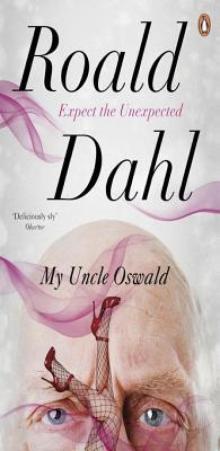 My Uncle Oswald
My Uncle Oswald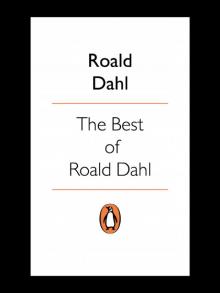 The Best of Roald Dahl
The Best of Roald Dahl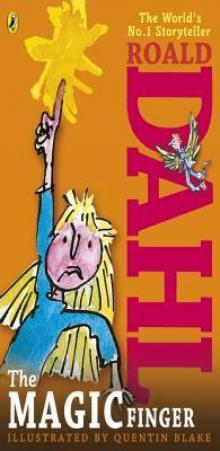 The Magic Finger
The Magic Finger Charlie and the Chocolate Factory
Charlie and the Chocolate Factory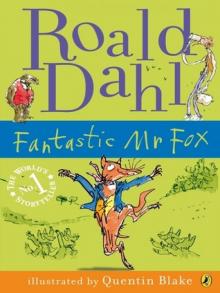 Fantastic Mr Fox
Fantastic Mr Fox Matilda
Matilda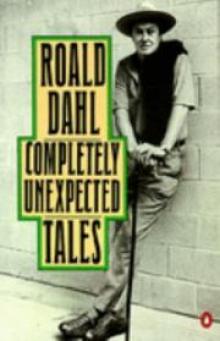 Completely Unexpected Tales: Tales of the Unexpected. More Tales of the Unexpected
Completely Unexpected Tales: Tales of the Unexpected. More Tales of the Unexpected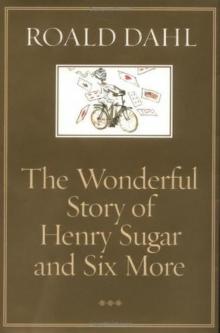 The Wonderful Story of Henry Sugar and Six More
The Wonderful Story of Henry Sugar and Six More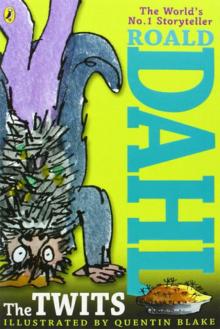 The Twits
The Twits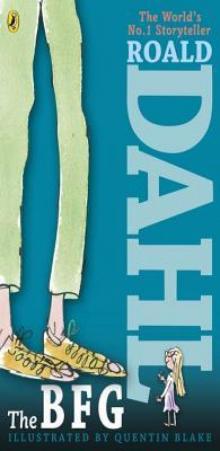 The BFG
The BFG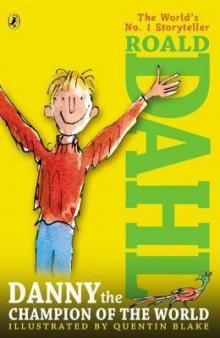 Danny the Champion of the World
Danny the Champion of the World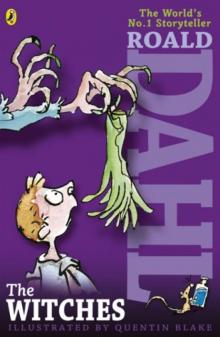 The Witches
The Witches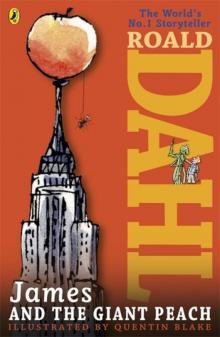 James and the Giant Peach
James and the Giant Peach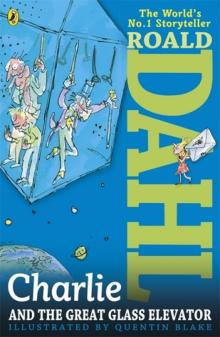 Charlie and the Great Glass Elevator
Charlie and the Great Glass Elevator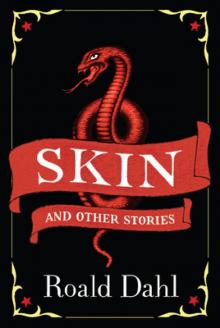 Skin and Other Stories
Skin and Other Stories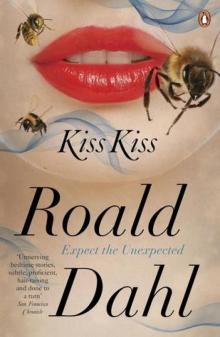 Kiss Kiss
Kiss Kiss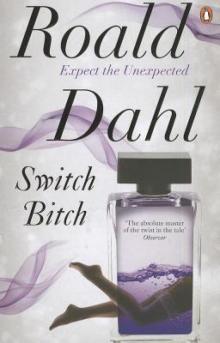 Switch Bitch
Switch Bitch The Giraffe and the Pelly and Me
The Giraffe and the Pelly and Me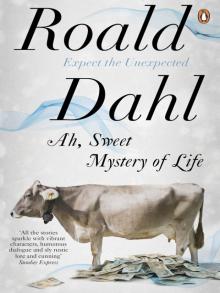 Ah, Sweet Mystery of Life
Ah, Sweet Mystery of Life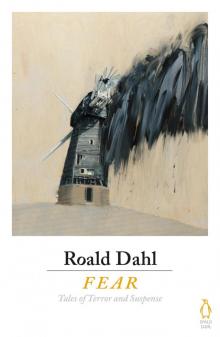 Fear
Fear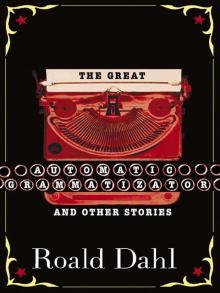 The Great Automatic Grammatizator and Other Stories
The Great Automatic Grammatizator and Other Stories Someone Like You
Someone Like You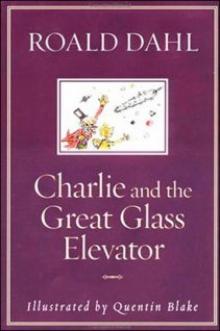 Charlie and the Great Glass Elevator c-2
Charlie and the Great Glass Elevator c-2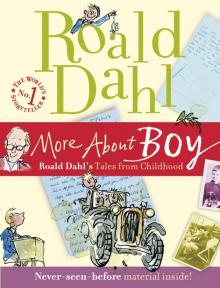 More About Boy
More About Boy Tales of the Unexpected
Tales of the Unexpected The Umbrella Man and Other Stories
The Umbrella Man and Other Stories Dirty Beasts
Dirty Beasts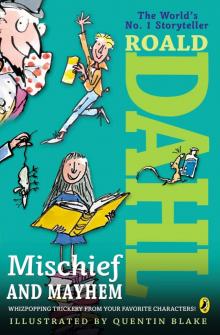 Roald Dahl's Mischief and Mayhem
Roald Dahl's Mischief and Mayhem The Collected Short Stories of Roald Dahl, Volume 1
The Collected Short Stories of Roald Dahl, Volume 1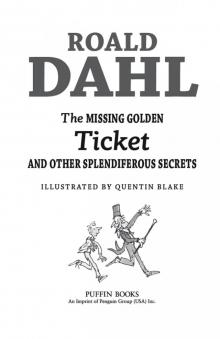 The Missing Golden Ticket and Other Splendiferous Secrets
The Missing Golden Ticket and Other Splendiferous Secrets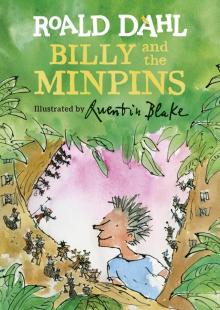 Billy and the Minpins
Billy and the Minpins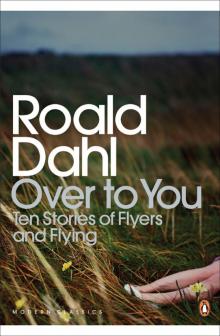 Over to You
Over to You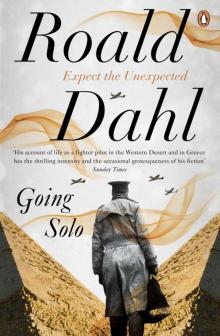 Going Solo
Going Solo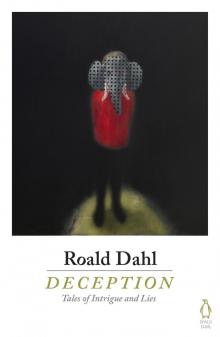 Deception
Deception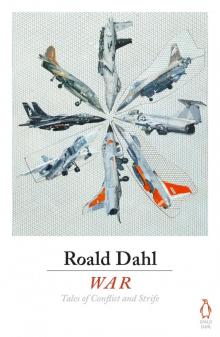 War
War Man from the South ee-3
Man from the South ee-3 More Tales of the Unexpected
More Tales of the Unexpected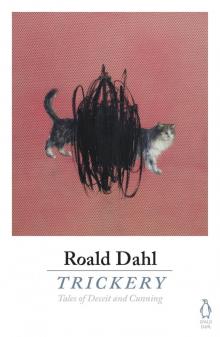 Trickery
Trickery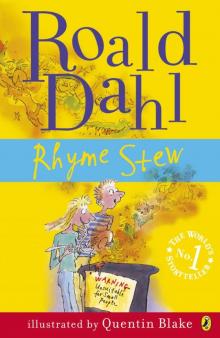 Rhyme Stew
Rhyme Stew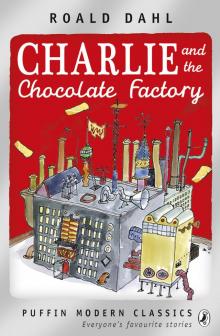 Charlie and the Chocolate Factory (Puffin Modern Classics relaunch)
Charlie and the Chocolate Factory (Puffin Modern Classics relaunch)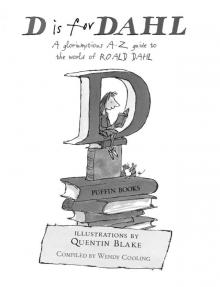 D is for Dahl
D is for Dahl Roald Dahl Whoppsy-Whiffling Joke Book
Roald Dahl Whoppsy-Whiffling Joke Book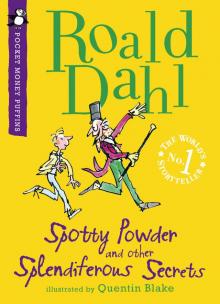 Spotty Powder and other Splendiferous Secrets
Spotty Powder and other Splendiferous Secrets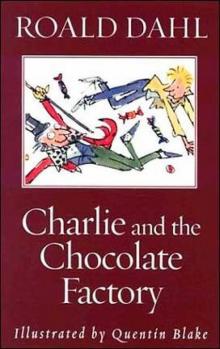 Charlie and the Chocolate Factory c-1
Charlie and the Chocolate Factory c-1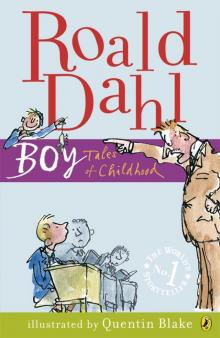 Boy
Boy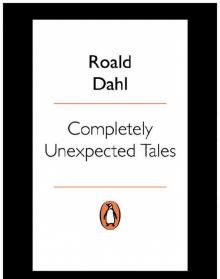 Completely Unexpected Tales
Completely Unexpected Tales Madness
Madness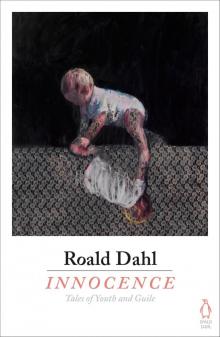 Innocence
Innocence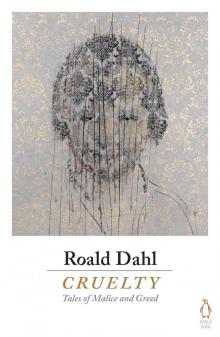 Cruelty
Cruelty George's Marvellous Medicine
George's Marvellous Medicine